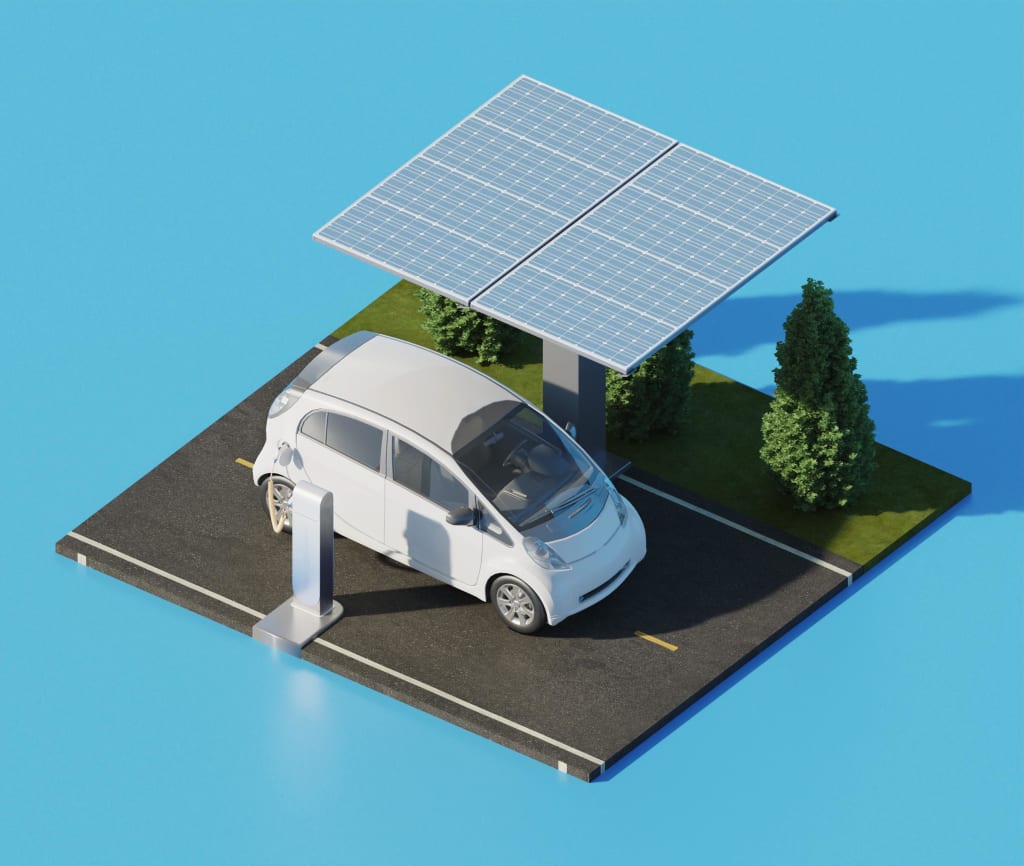Power Plant Maintenance Market - Exclusive Report on the Latest Trends and Opportunities in the Future
Solar EV charging Market Expected to Reach $330.9 Million by 2031

Utilization of solar energy for charging electric vehicles is an evolving idea which has taken ground over the past few years. Solar PV has proven to be an excellent solution for localized electricity generation, even for large-scale applications. Over the past ten years, researchers have tried to include solar energy for charging stations to ensure energy autonomy and reduced emissions. The solar EV charging market was valued at $159.6 million in 2021, and is estimated to reach $330.9 million by 2031, growing at a CAGR of 8.1% from 2022 to 2031.
However, EVs have been in the market since the 1990s, and facing concerns related to grid availability and green energy solution for EVs. Over the past few years, many government bodies, automotive manufactures and other industry stakeholders have come forward to explore the new opportunities offered by combining solar and electric vehicle charging.
A solar panel harnesses the solar radiation and into electrical energy which is used to charge EV batteries with clean energy. Solar energy is one of the cleanest options for fueling the electric cars. The main advantage for solar EV charging to operate for a long time is the extended life span of solar panels. Improvement in technology is enabling solar EV charging to create new records in terms of power generation and capacity which is boosting the global EV charging market size in future. Fast solar EV charging has solar panels and connected to grid which can generate the required power to charge EVs.
Surge in awareness and promotion of using green energy solution are expected to drive the global solar EV charging market growth in anticipated period. Solar EV charging has several advantages such as energy-saving, durable, affordable, safe and eco-friendly which is expected to fuel the global solar EV charging market share in near future. The demand for solar EV charging is already high in the residential sector as solar EV charging lowers the expense on charging EV battery.
As per the solar EV charging market forecast, global trends indicate that both the EV and solar industry has been witnessing an exponential growth over the recent past. The challenges are coming in the way to make EVs as the mainstream for transportation. Both government policymakers and automakers are looking into innovative, practical approaches to address problems which is helping the solar EV charging market trends to grow in the anticipated period.
"In the near future, there will be a solar EV charging market opportunities such as the growing adoption of EVs in developing countries and improvement in the energy storage systems. For instance, U.S. has approximately 250,000 EVs and about 500,000 solar rooftops, and both industries are still growing exponentially."
Thus, the combination of solar energy and EV is mutually beneficial for both the industries wherein each one can open new avenue of growth for solar EV charging industry and automotive industry, while also helping in reducing the eco footprint, quite significantly. In addition, the solar EV charging market is expected to open new windows of business opportunities in the near future throughout the value chain while keeping up the clean energy commitment.
The solar EV charging market is segmented on the basis of charging level, system, application and region. On the basis of charging level, the market is divided into Level 1, Level 2, and Level 3 (DC fast charging). On the basis of system, the market is categorized into off-grid, on-grid. On the basis of application, the market is categorized into public EV charger and private EV charger. Region-wise, the market is analyzed across North America, Europe, Asia-Pacific, and LAMEA. Presently, Asia-Pacific accounts for the largest share of the market, followed by Europe.
On the basis of charging level, the level 2 segment held major share in terms of revenue and the segment is expected to grow at the highest CAGR of 8.1% from 2022 to 2031. The level 2 charging type is primarily utilized in residential areas which recharges an EV’s battery very quickly. The level 2 charging type is popular in the solar EV charging industry since it is simple to use and reasonably priced.
On the basis of system, the off-grid segment held highest share in terms of revenue and is expected to grow at a CAGR of 8.3% from 2022 to 2031. The off-grid segment helps avoid power outages, reduction in electricity costs, and ease of installation which boosts its adoption in highways projects and city charging unit projects. Off grid solution acts as alternative power source for rural areas, which increases its demand in the solar EV charging market.
On the basis of application, the private EV charger segment held dominant share in terms of revenue and is expected to grow at a CAGR of 8.0% from 2022 to 2031. The EVs take time in charging, which increases the demand for solar EV charging as a private EV charger in the residential sector. EVs plug-in the car overnight to get battery fully charge. Solar private EV charger lowers the burden on electricity bills which increases its demand in the market.
On the basis of region, the Asia-Pacific region held major share in terms of revenue and is anticipated to grow at a CAGR of 8.4% from 2022 to 2031. Future developments in China solar product industry are projected to drive the growth of the solar EV charging market in the country. Europe holds the CAGR of 8.2% during the forecast period.
The solar EV charging market analysis covers in-depth information of the major industry participants. Some of the major players in the solar EV charging market include iSun, Inc., Bharat Heavy Electricals Limited, Zhejiang Benyi New Energy Co., Ltd. , PowerFlex, EmPower Solar, HES Solar., Paired Power, KEBA, Brightfield Transportation Solutions., and ChargePoint, Inc.
Key findings of the study
- On the basis of charging level, the level 2 segment held the market share of more than 60.0% in 2021 in terms of revenue
- On the basis of system, the off grid segment held the market share of around 70.0% in 2021 in terms of revenue
- On the basis of application, the private EV charger segment held three-fourths market share in 2021 in terms of revenue
- On the basis of region, the Asia-Pacific region held the market share of more than 30.0% in 2021 in terms of revenue
About the Creator
Enjoyed the story? Support the Creator.
Subscribe for free to receive all their stories in your feed. You could also pledge your support or give them a one-off tip, letting them know you appreciate their work.






Comments
There are no comments for this story
Be the first to respond and start the conversation.